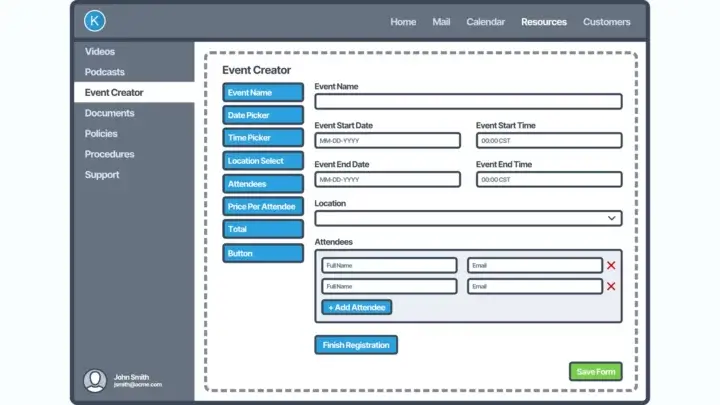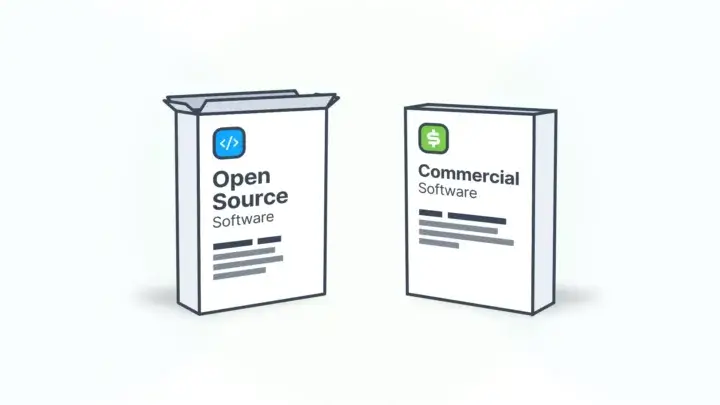50 seconds later. That was it.
Setting the stage for the reveal of a new innovation in a demo would usually take more time. This day it just wasn’t the case because the tools were already there to make it happen—without the integration headaches one might expect.
It’s safe to say that AI-powered applications using large language models (LLMs) are here to stay. Organizations are actively aiming to take advantage of their potential. And the lowest hanging fruit on the tree of potential are the sweet, juicy benefits of automating repetitive and menial tasks.
The orchard is ripe and everyone is racing through it to pick the best apples.
However, despite the explosion of AI-powered apps and generative AI agents hitting the market there’s ONE big hang-up that’s inhibiting organizations from quickly taking advantage of AI.
America’s Next Top Model
It isn’t that the these models sometimes output data that isn’t accurate enough or that it needs sanitization. While this is a crucial consideration, models can be trained on your data or your customers’ data which significantly improves accuracy.
At the same time, these models are improving in dramatic, measurable ways—and at lightning speed. It’s almost as if every 4-6 weeks one of the major providers releases a new model that dethrones the last one that held the top spot. It’s America’s Top Model all over again.
And the results speak for themselves. These generative AI agents are being given structured requirements docs and when the developer presses go, the generative AI agent will spin up a fully-functional application within hours, give or take.
This process isn’t limited to app development either. Marketing, operations, whatever—work that used to take weeks or months is being completed within hours.
So what’s the big hang-up then?
Compatibility.
Check Your Bag Before You Board
Some early AI adopters discovered that legacy technologies within many organizations couldn’t manage the multi-modal data structures required to power integrated generative AI agents and AI-driven applications.
Legacy tech leaves these organizations with disparate data and components across their ecosystem. The thought of integrating these together in a way that would render AI useful seems a bit daunting. And if organizations do make it happen, how difficult will it be to support it?
To make generative AI agents and AI-powered apps actually work, they need to have broader access to your data.
That means bringing your data together in a meaningful, multi-modal way. Before you arrive at the tropical paradise of AI automation, you’re going to have to choose an “airline” and check this data integration bag before you board.
I mean, you could build the airplane (tool) yourself, hire the pilots (developers), and spend months or even years getting there by yourself.
But a lot of airlines are already flying to KauAI, so it doesn’t make sense to reinvent the wing.
Buying An Airplane For Less
What if owning an airplane was cheaper than buying plane tickets every year? You could fly whenever you wanted, on your terms, and it would cost less. This doesn’t exist with actual airplanes, but it does if we’re talking about data integrations and the app you’re building. Let me land this metaphor.
Form.io is not just for building forms. It also uses forms to operate as the API model that maps out your data integration needs across internal, legacy, and third-party sources that your organization relies on.
It’s the terminal that can route all your data between these sources. It doesn’t even have to store the data—it can just process it.
However, compatibility isn’t just about the data and tools talking to each other. The data itself needs to be structured. Structured data is data that can be easily read by your systems as well as your users, which means forms. Forms, fields, entire projects, everything in Form.io is an API and JSON-driven, which means its structured, transferrable, compatible for any AI use cases.
It’s fully deployed in your environment so your data never has to leave your ecosystem. It’s all your airplane that you didn’t have to build nor do you have to service or support. In terms of cost, you’re never paying for API calls, users, submissions, or anything like that—it’s just a simple license so you always know what the cost is every month.
So you can build the application you want, bring in all the data you need, and have the tools to integrate generative AI agents and AI-powered functionality, without having to sacrifice the custom, bespoke nature of what you’re trying to do.
That’s what I mean by “on your terms.”
DEMO: Out-Of-The-Box AI Readiness
Once you arrive at your destination it’s time to have some fun. Form.io has built in tools to make this simple to start taking advantage of AI automation. This is what I was talking about at the beginning when I said “50 seconds later.”
Let me show you:
Let’s say you have 20+ fields on a form that need to be populated on regular basis. It requires manually tracking down the information and manually inputting everything in the relevant fields. This happens every day.
Your goal is to automate this.
In our proof-of-concept demo, we’re working with just a handful of fields in a CRM, but you’ll get the idea. We’re going to automate populating our CRM with enriched lead data based on what can be researched from their public websites.
Here’s how it works:
The standard set of fields that get populated in a CRM are built:

Then at the bottom, an the out-of-the-box hidden field component is added that stores your pre-written prompt that contains the specific instructions you give the generative AI agent. The second field is a data source component that actually makes the request:

The user populates one field with some data, in this case a public website URL:

Before submitting the data, after a user populates this field, then clicks off of it (or you could require the user to click a separate “populate” button):
- The prompt from the first field is packaged with a request.
- The data source component sends the request to the LLM through an API-proxy so that the LLM’s API key isn’t exposed to the client/user.
That all took less than a minute to explain.
The result: the generative AI agent / LLM populates the relevant fields within about 5 seconds:

In our example, the prompt was only one sentence, which is not that sophisticated. Far more could be done to engineer powerful prompts to improve accuracy and the ability to provide a more complete set of data.
Even this simple demo could be wired to accept image inputs with the prompt.
What’s Next For AI Automation In Your Forms?
It’s possible, right now, to configure a generative AI agent trained on your data to operate 24/7, as a service on a server of yours, to track down data and populate your forms for you so that the results of what the LLM provides you is structured and ready-to-use. Be that marketing content drafts, leads in a CRM, or whatever else you can think of.
But this is only one side of the equation when it comes to AI and forms.
Because Form.io forms and their components are all API-driven, generative AI agents could also be configured to build forms based on a prompt or set of requirements you give them.
Let’s say your organization has customer data for 1,000 different companies. Not all of that data is necessarily uniform either.
And you need to build a custom form that’s tailored to each company, based on the data that you have for each.
A team of 10 form builders could take up to a week to build 1,000 custom forms that are customer-specific, especially if they’re long.
But with a generative AI agent trained on your customer data, you could store a specific set of instructions in a prompt, with conditional logic and validation requirements, and descriptive use-cases for when certain data is available or not, and have it build all 1,000 for you, that day.
If you wanted to reign things in a bit tighter and build one at a time, you could have a form builder specify the customer, drag a custom component with the prompt data onto an otherwise empty form, and then let the generative AI agent build the form within seconds.
I think these use-cases are only scratching the surface. We’re working on some more demos. We’re also eager to see what our customers come up with. The question is, how far is this going to go?
Surely to the skies.

















